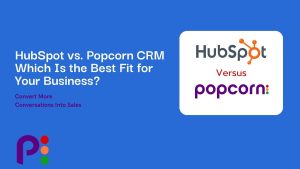Simple Prospecting: An Introduction
Small businesses are busy. This is a truth universally acknowledged, like the sky being blue and water being wet. Time management, and task management, are therefore vital for the small business. Whichever part you play, you need to be able to play it well, and make your time as efficient as possible. This is especially true when prospecting comes into the mix. If you can make the most out of your prospecting, you can keep the whole ship running for everyone.
So how can you maximise your efficiency? It’s about how you use your time, and what methods you use to make your prospecting work. What are you doing that slows you down, and what can you do better? Simple prospecting can consequently go a long way in setting your business up for success.
Know Your Sales Process
The best way to improve something is to understand what it is. Your sales process shouldn’t be dictated by the every whim of your prospects. You should be guiding them every step of the way, coaxing them to where they need to be. You should be in as much control as is possible.
So knowing the ins and outs of how this works will help you identify its strengths and weakness. Trimming this down is a helpful tactic for each member of your business, especially if you make this a regular checkup: it requires collaboration to visualise and refine what you’re working on in the different parts of your business.
If you know it, you know how you can make it efficient. That means doing the best with only what’s necessary. Keeping this simple will ensure you don’t overburden yourself—or, your prospects, either, by contacting them when you don’t need to, and accidentally hounding them in the process.

Centralise Your Data for Simple Prospecting
To make your small business work life simple, you have to keep the tools simple. But that doesn’t have to mean basic.
The idea is not to have the cheapest, smallest, most separate piece of software possible, because ultimately you accumulate data from everywhere, and that way you run into problems. No—what this means is simplifying your points of contact between your goal and its realisation—from planning to purchase. You can make this happen in a huge way by gathering all your data in one place, and using this place as the starting point for everything you do.
That means you spend less time on sourcing data, and more time on the tasks that matter. Centralising your data also allows you to see the bigger picture across multiple contacts or segments, so your prospecting becomes simpler and more effective.
Use What You Know
It can be tempting to try out flashy new tools that promise the world, but, ultimately, success will come from you, and how well you can sell your business. You also know what’s worked for you.
What was it about your methods that was successful? What appealed most to your prospects?
These are gems of information that can help you formulate your next moves. Instead of splashing out, you can concentrate on what worked, cutting away the excess to deliver reliable results from your simple prospecting.
Feedback Encourages Simple Prospecting
The best results comes from not just a closed deal—though that is always great—but from what you learn. Businesses are always a work in progress, and much like in the previous point, you can always refine your technique to deliver an even better experience next time.
This doesn’t need a new tool to take a chunk out of your day to use. All it needs is a question—from you—and an answer—from the customer. This is more information that you and your team can take on board. They can help you simplify areas you need to improve, focusing on what worked and getting rid of the unsuccessful.
Act On Your Reports
You’ll no doubt be gathering some interesting results from your efforts, whether you’re marketing to individuals or conducting campaigns. These can really show where your prospect’s desires lie, and they might not be where you thought they were.
When it comes to reporting, every little helps, as it all makes up the bigger picture. However, you also want to make sure your reporting is accessible, understandable, and simple, so it can be easily digested for maximum efficiency! Your resultant actions need to keep this in mind so you can carry that spirit of simplicity through, in a way that makes your prospects react positively.

Know When to Push, And When to Move On
We talked last week about how to keep on top of follow ups, but another related point is when another follow up becomes too many. This really is about reading your prospect, and understanding when the effort isn’t worth it anymore.
After a certain amount of follow ups, you can quickly ascertain whether a prospect is receptive or not. The quicker you cotton on, the less time you’re wasting pursuing a dead end.
Set yourself a limit of follow ups in your sales process. If you’re not getting enthusiastic responses, it’s time to cut your losses—to keep your simple prospecting really simple.
Automate for Simple Prospecting
This may seem counter-intuitive, but the benefits are long-term. Automation requires you to set up rules in response to actions—yes. But this makes your future much simpler going forward, and more stress-free.
Establishing rules will help your sales process to function on its own, so you don’t need to be present for every action and reaction. With part of the job off your shoulders, you can dedicate your time to make the most out of the contact you are there for, making the process for you simpler, and more satisfying.
Simple Prospecting: Conclusion
Having simple prospecting will keep your balance between tasks much more manageable. From this, you’ll get better results: a more straightforward approach will give you space to breathe instead of being bogged down in complicated processes. You’re more likely to achieve your goals, and keep you and your team motivated throughout the process of prospecting.
Click here to find out how popcorn’s CRM centralises your data, so you can see all your prospecting in one place.
Enjoyed this post? Comment below or read through our blog for more lead management and CRM tips, especially for small businesses.











